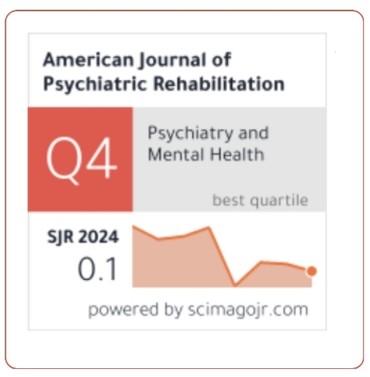AI-Driven Drug Discovery: Transforming Neurological and Neurodegenerative Disease Treatment Through Bioinformatics and Genomic Research
DOI:
https://doi.org/10.69980/ajpr.v28i1.71Keywords:
Big Data, Cloud Computing, Genetic Testing, Reproductive Health, Personalized Medicine, Data Analytics, Healthcare Innovation, Genetic Data Storage, Predictive Modeling, Reproductive Medicine, Health Data Integration, Artificial Intelligence, Bioinformatics, Cost Reduction in Healthcare, Precision MedicineAbstract
AI-driven drug discovery implemented via a number of machine learning techniques is transforming the field of treatment for neurological and neurodegenerative diseases. Modern bioinformatics and genomic research have enabled the aggregation and processing of vast quantities of biological and medical data, intensifying recent interest in machine learning tools. Developed models have been applied widely in screening libraries of potential compounds for new drugs, in studying in vivo models of these diseases tailored to develop particular proteinopathies, and in prospective clinical trials on new therapies. This review focuses on advanced machine learning tools and approaches for drug discovery in neurodegenerative diseases that have not yet become broadly utilised. It is motivated in part by the successful efforts to apply ML models for Parkinson’s disease clinical trial design, due to a strong need for new treatments. The field has recently been reviewed, though only selective efforts were discussed and technological advances in machine learning have been, in the interim, substantial. While efforts to discover new therapeutics for neurodegenerative diseases such as Alzheimer’s and Parkinson’s have proved elusive, recent successes both in the application of novel drug delivery systems or biologics and efforts to start treatment earlier in the disease course have renewed interest in CNS drug discovery. In parallel, the modern revolution of big data has led to enormous increases in the quantity and variety of biological and medical data that can be leveraged. Finally, recent advances in machine learning have facilitated the analysis and understanding of these complex datasets. Broadly, there are eight areas encompassing the CNS drug discovery pipeline where modern machine learning is increasingly used to drive pre-clinical and clinical programs: patient stratification, target identification, screening and lead discovery, lead optimization, models of disease, polypharmacy, in vivo and in vitro assays, and rational study design.
References
[1] Polineni, T. N. S., & Seenu, A. (2025). The New Frontier of Healthcare and Industry: Subash’s Expertise in Big Data and Cloud Computing for Enhanced Operational Efficiency. Cuestiones de Fisioterapia, 54(2), 271-283.
[2] Maguluri, K. K., Ganti, V. K. A. T., Yasmeen, Z., & Pandugula, C. (2025, January). Progressive GAN Framework for Realistic Chest X-Ray Synthesis and Data Augmentation. In 2025 6th International Conference on Mobile Computing and Sustainable Informatics (ICMCSI) (pp. 755-760). IEEE.
[3] Koppolu, H. K. R. Deep Learning and Agentic AI for Automated Payment Fraud Detection: Enhancing Merchant Services Through Predictive Intelligence.
[4] Nampalli, R. C. R., & Adusupalli, B. (2024). AI-Driven Neural Networks for Real-Time Passenger Flow Optimization in High-Speed Rail Networks. Nanotechnology Perceptions, 334-348.
[5] Chakilam, C. (2022). Generative AI-Driven Frameworks for Streamlining Patient Education and Treatment Logistics in Complex Healthcare Ecosystems. Kurdish Studies. Green Publication. https://doi. org/10.53555/ks. v10i2, 3719.
[6] Sriram, H. K. (2023). Harnessing AI Neural Networks and Generative AI for Advanced Customer Engagement: Insights into Loyalty Programs, Marketing Automation, and Real-Time Analytics. Educational Administration: Theory and Practice, 29(4), 4361-4374.
[7] Burugulla, J. K. R. (2025). Enhancing Credit and Charge Card Risk Assessment Through Generative AI and Big Data Analytics: A Novel Approach to Fraud Detection and Consumer Spending Patterns. Cuestiones de Fisioterapia, 54(4), 964-972.
[8] Chava K. Dynamic Neural Architectures and AI-Augmented Platforms for Personalized Direct-to-Practitioner Healthcare Engagements. J Neonatal Surg [Internet]. 2025Feb.24 [cited 2025Mar.24];14(4S):501-10. Available from: https://www.jneonatalsurg.com/index.php/jns/article/view/1824
[9] Challa, K. (2024). Neural Networks in Inclusive Financial Systems: Generative AI for Bridging the Gap Between Technology and Socioeconomic Equity. MSW Management Journal, 34(2), 749-763.
[10] Sondinti, K., & Reddy, L. (2025). The Future of Customer Engagement in Retail Banking: Exploring the Potential of Augmented Reality and Immersive Technologies. Available at SSRN 5136025.
[11] Malempati, M., & Rani, P. S. Autonomous AI Ecosystems for Seamless Digital Transactions: Exploring Neural Network-Enhanced Predictive Payment Models.
[12] Pallav Kumar Kaulwar. (2023). Tax Optimization and Compliance in Global Business Operations: Analyzing the Challenges and Opportunities of International Taxation Policies and Transfer Pricing. International Journal of Finance (IJFIN) - ABDC Journal Quality List, 36(6), 150-181.
[13] Vankayalapati, R. K. (2025). Architectural foundations of hybrid cloud. The Synergy Between Public and Private Clouds in Hybrid Infrastructure Models: Real-World Case Studies and Best Practices, 17.
[14] Nuka, S. T. (2025). Leveraging AI and Generative AI for Medical Device Innovation: Enhancing Custom Product Development and Patient Specific Solutions. Journal of Neonatal Surgery, 14(4s).
[15] Rao Suura S. Agentic AI Systems in Organ Health Management: Early Detection of Rejection in Transplant Patients. J Neonatal Surg [Internet]. 2025Feb.24 [cited 2025Mar.24];14(4S):490-50.
[16] Kannan, S. (2025). Transforming Community Engagement with Generative AI: Harnessing Machine Learning and Neural Networks for Hunger Alleviation and Global Food Security. Cuestiones de Fisioterapia, 54(4), 953-963.
[17] Srinivas Kalisetty, D. A. S. Leveraging Artificial Intelligence and Machine Learning for Predictive Bid Analysis in Supply Chain Management: A Data-Driven Approach to Optimize Procurement Strategies.
[18] Challa, S. R. Diversification in Investment Portfolios: Evaluating the Performance of Mutual Funds, ETFs, and Fixed Income Securities in Volatile Markets.
[19] Vamsee Pamisetty. (2023). Intelligent Financial Governance: The Role of AI and Machine Learning in Enhancing Fiscal Impact Analysis and Budget Forecasting for Government Entities. Journal for ReAttach Therapy and Developmental Diversities, 6(10s(2), 1785–1796. https://doi.org/10.53555/ jrtdd.v6i10s (2).3480
[20] Komaragiri, V. B. (2022). AI-Driven Maintenance Algorithms For Intelligent Network Systems: Leveraging Neural Networks To Predict And Optimize Performance In Dynamic Environments. Migration Letters, 19, 1949-1964.
[21] Annapareddy, V. N., & Rani, P. S. AI and ML Applications in RealTime Energy Monitoring and Optimization for Residential Solar Power Systems.
Downloads
Published
Issue
Section
License
Copyright (c) 2025 American Journal of Psychiatric Rehabilitation

This work is licensed under a Creative Commons Attribution 4.0 International License.
This is an Open Access article distributed under the terms of the Creative Commons Attribution 4.0 International License permitting all use, distribution, and reproduction in any medium, provided the work is properly cited.









